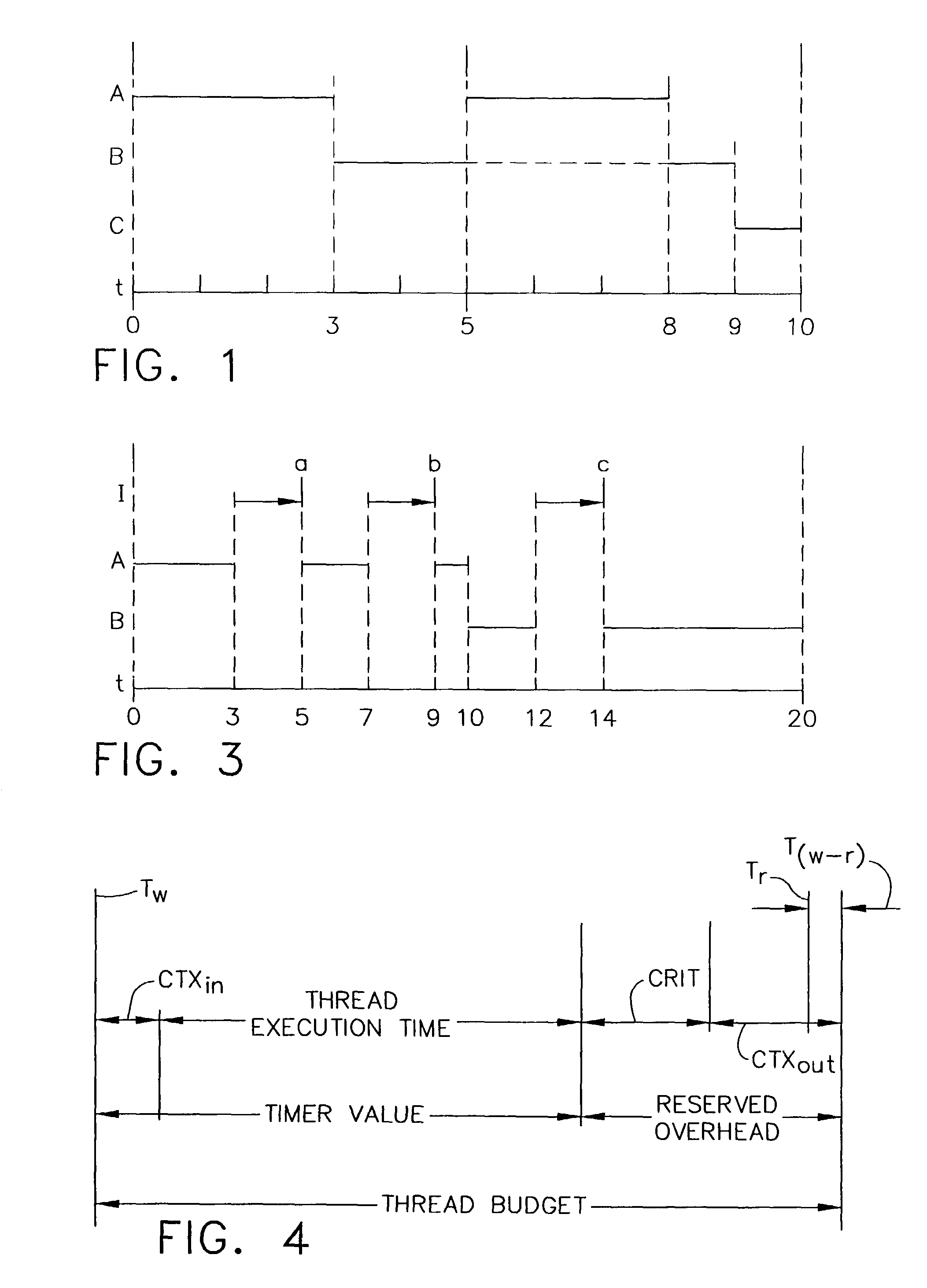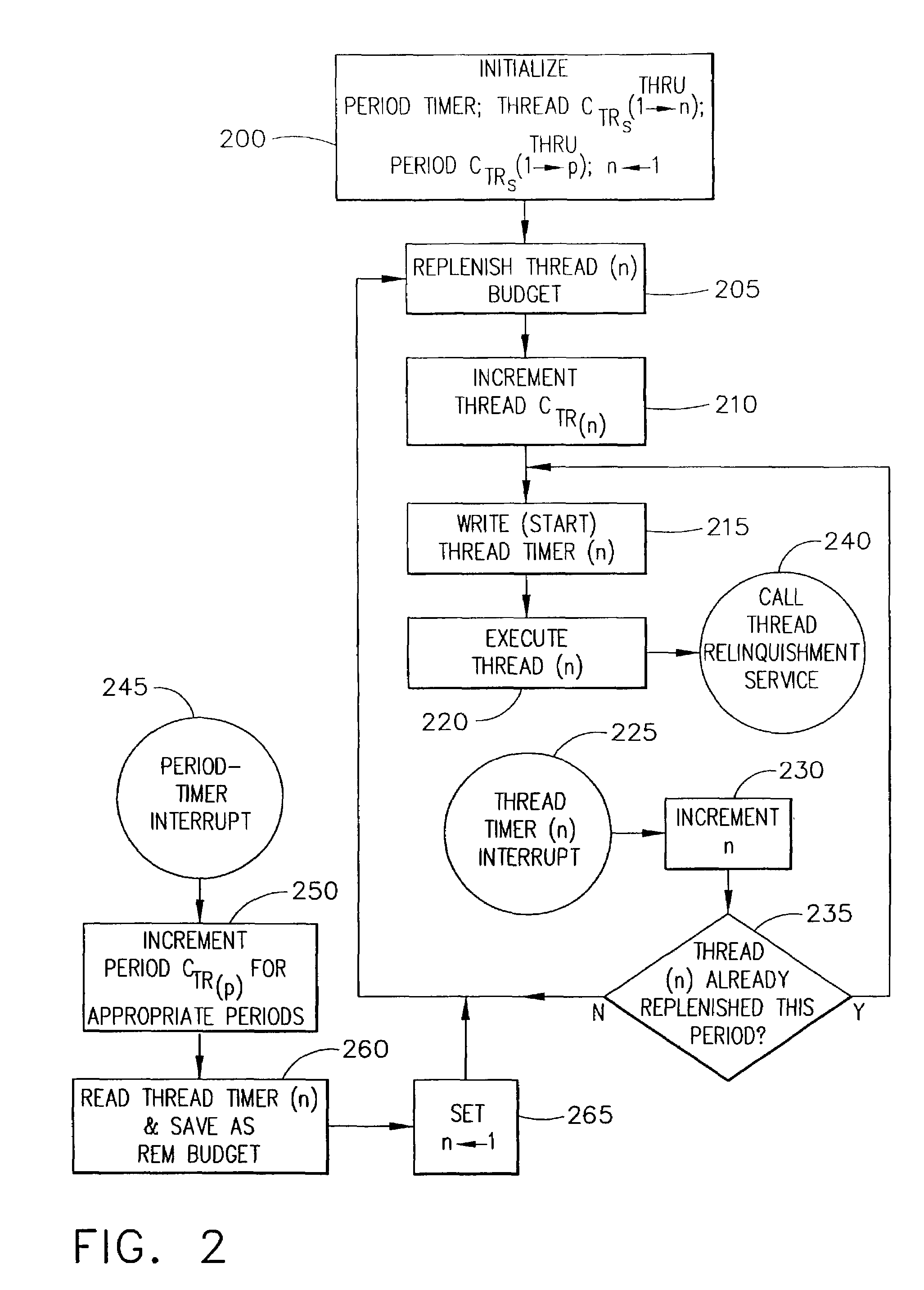System and method for robust time partitioning of tasks in a real-time computing environment
a real-time computing environment and task technology, applied in the field of computer operating systems, can solve the problems of inability to enforce the timing boundaries between applications, inability to accurately account for operating system overhead, lack of capability, etc., and achieve the effect of simplifying the enforcement of application budget and allowing variability in processing tim
- Summary
- Abstract
- Description
- Claims
- Application Information
AI Technical Summary
Benefits of technology
Problems solved by technology
Method used
Image
Examples
Embodiment Construction
[0028]The present invention provides a mechanism for accounting for operating system overheads and processor interrupts in order to schedule multi-threaded application programs or processes in a manner which is enforceable by the operating system. In the context of the present method, an application (synonymous with the term ‘process’, for the purposes of this document), can have any number of threads. Every thread is associated with an application, which is considered to be the owner of the thread. The exact number of threads that can be active at any given time is a function of the CPU budget provided to the application, and the amount of CPU (processor) utilization allocated to the application's threads.
[0029]The thread scheduler of the present invention requires that every thread have a period associated with the thread. The thread scheduler is rate monotonic; i.e., it assigns priorities based on the rate of the thread (shorter duration periods have higher priority). In addition...
PUM
 Login to View More
Login to View More Abstract
Description
Claims
Application Information
 Login to View More
Login to View More - R&D
- Intellectual Property
- Life Sciences
- Materials
- Tech Scout
- Unparalleled Data Quality
- Higher Quality Content
- 60% Fewer Hallucinations
Browse by: Latest US Patents, China's latest patents, Technical Efficacy Thesaurus, Application Domain, Technology Topic, Popular Technical Reports.
© 2025 PatSnap. All rights reserved.Legal|Privacy policy|Modern Slavery Act Transparency Statement|Sitemap|About US| Contact US: help@patsnap.com



